
The Historic Old Central High School of Duluth, Minnesota, United States, is a local landmark dating to 1892. One of Minnesota's leading examples of Richardsonian Romanesque architecture, it occupies an entire city block and sports a 210-foot (64 m) clock tower. It was listed on the National Register of Historic Places as Duluth Central High School in 1972 for its state-level significance in the theme of architecture.
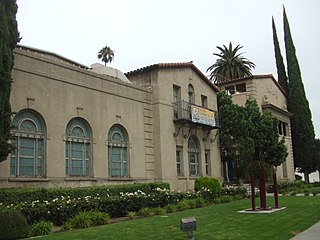
Riverside Art Museum is an art museum in the historic Mission Inn District of Riverside, California. The museum is a non-profit organization which focuses on addressing social issues and offers art classes as well as other events in order to inspire and build community.

Asilomar Conference Grounds is a conference center built for the Young Women's Christian Association (YWCA). It is located east of what was known as Moss Beach on the western tip of the Monterey Peninsula in Pacific Grove, California. Between 1913 and 1929 architect Julia Morgan designed and built 16 of the buildings on the property, of which 11 are still standing. In 1956 it became part of the State Division of Beaches and Parks of California's Department of Natural Resources, and Moss Beach was renamed Asilomar State Beach. Asilomar is a derivation of the Spanish phrase asilo al mar, meaning asylum or refuge by the sea. It is the native homeland of the Rumsen Ohlone people.
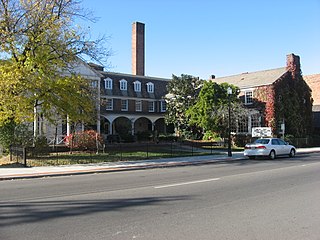
The former Zanesville YWCA, located at 49 North 6th Street in Zanesville, Ohio, United States, is an historic building built in 1926 for members of the Young Women's Christian Association. It was designed by Howell & Thomas. On July 17, 1978, it was added to the National Register of Historic Places. It is now Bryan Place.

YMCA Boston was founded in 1851 in Boston, Massachusetts, as the first American chapter of YMCA.

This is a list of the National Register of Historic Places listings in Saint Louis County, Minnesota. It is intended to be a complete list of the properties and districts on the National Register of Historic Places in Saint Louis County, Minnesota, United States. The locations of National Register properties and districts for which the latitude and longitude coordinates are included below, may be seen in an online map.

Sacred Heart Cathedral, Sacred Heart School and Christian Brothers Home comprise a former Roman Catholic diocesan complex in the Central Hillside neighborhood of Duluth, Minnesota, United States. Sacred Heart Cathedral was built from 1894 to 1896 and served as the seat of the Roman Catholic Diocese of Duluth until 1957, after which it became a parish church. Sacred Heart School was built in 1904 and the Christian Brothers Home—a monastic residence for the school faculty—was built in 1907.

The Keokuk Young Women's Christian Association Building is a historic building located in Keokuk, Iowa, United States. It was listed on the National Register of Historic Places in 2004.

The Sellwood Branch YMCA, also known as the Sellwood Community Center, in southeast Portland in the U.S. state of Oregon, is a 2.5-story structure listed on the National Register of Historic Places. Built in 1910, it was added to the register in 2006.
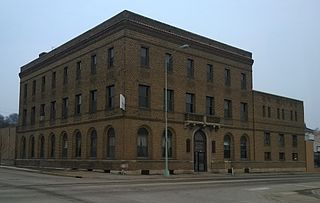
Ottumwa Young Women's Christian Association , also known as Your Family Center, is a historic building located in Ottumwa, Iowa, United States. Its significance is related to the local social movement that provided a safe place to live for young women and education programs that encouraged their business and professional development. The Young Women's Christian Association (YWCA) was established in Ottumwa in 1894 by 64 charter members. They began with opening reading and rest rooms before they opened a boarding house. In 1903 they acquired the former First Baptist Church building for their use. They cooperated with the local Young Men's Christian Association (YMCA) for recreational and camping activities. The YMCA built a new larger facility in 1921 and the YWCA considered buying their old building, but they decided to build their own building instead.

The YWCA Building in Peoria, Illinois was built in 1928. It was designed by Hewitt, Emerson & Gregg. The building was listed on the National Register of Historic Places in 2007. It sits at 301 Northeast Jefferson Avenue, at the north corner with Fayette Street in downtown Peoria.
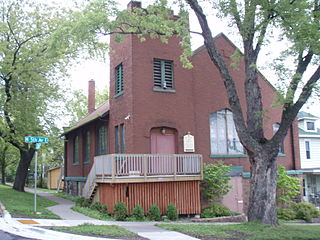
St. Mark's African Methodist Episcopal Church is a historic African Methodist Episcopal (AME) church in Duluth, Minnesota, United States. St. Mark's has played a central role in Duluth's African-American community for more than 124 years. While other black organizations have dissolved or moved to the Minneapolis–Saint Paul area, St. Mark's has been a local mainstay.

The Duluth Armory is a former armory and event venue in the East Hillside neighborhood of Duluth, Minnesota, United States. It was built in 1915 for the National Guard and naval militia, and expanded in 1941. From the beginning the National Guard also rented out the drill hall as an event venue, as it provided a larger and more flexible space than any other local venue until the construction of the Duluth Arena-Auditorium in 1966.
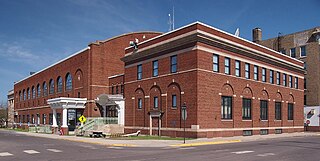
The Virginia Recreation Building is a former community center in Virginia, Minnesota, United States, that was later converted into a factory. It was designed by architect Frederick German and built in 1923 as an ice hockey and curling rink to provide a public venue for physical development to the working class men largely employed in Iron Range mines. A generation later, as the gender balance of the city's population evened out, the building was converted into a shirt factory in 1947 to create jobs for women. The building was listed on the National Register of Historic Places in 1982 for its state-level significance in the themes of industry and social history. It was nominated for encapsulating the social welfare of the Progressive Era and the robust public spending funded by the mining boom, and the transition to a more gender-balanced population and need to diversify the economy.

Dubuque YMCA Building, also known as the Iowa Inn, is a historic building located in Dubuque, Iowa, United States. Several area churches partnered to form the local YMCA in 1857. It was one of the first chapters formed west of the Mississippi River. Its activities ceased during the American Civil War, and it was reformed in 1866. They rented rooms on Main Street for their activities. Its first modest gymnasium was outfitted in 1884, and it was improved in 1992 when YMCA took over the facilities over the former Dubuque Athletic Club. The local YMCA completed the first section of this facility two years later, with the second section completed in 1916.
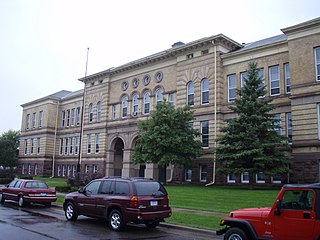
Irving School is a former school building in Duluth, Minnesota, United States. It operated as a school from its construction in 1895 until 1982, when it was closed due to declining enrollment. Upon closing it underwent adaptive reuse as an apartment building. In 1992 the Irving School was listed on the National Register of Historic Places for its local significance in the themes of architecture and education. It was nominated for its early Renaissance Revival design by Palmer, Hall, & Hunt and for its association with the expansion and evolution of the Duluth school system.
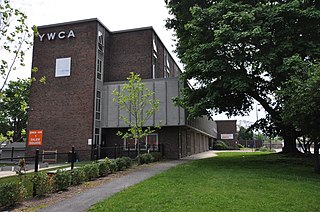
The Young Women's Christian Association (YWCA) of Worcester, now the YWCA of Central Massachusetts, was founded in 1885 in Worcester, Massachusetts. The nonprofit organization, like many other YWCA chapters, provides a wide variety of tailored services to women and children in its service area. Included are health and fitness services, transitional housing for single women and mothers with children, job training programs, and racial equity programs for women of color. The YWCA is headquartered at 2 YWCA in downtown Worcester, in a facility listed on the National Register of Historic Places.

The YWCA Building is a historic Young Women's Christian Association building Bellingham, Washington that was completed in 1915. It was added to the National Register of Historic Places in 1977 and continues to be used by the Bellingham YWCA.

The YWCA Building Complex is a set of three historic Young Women's Christian Association buildings in Athens, Georgia. They were added to the National Register of Historic Places in 1987 as a single listing, not a historic district.
























